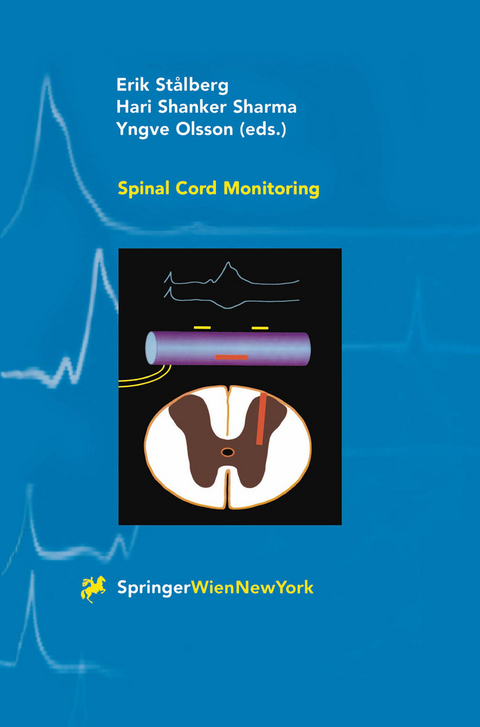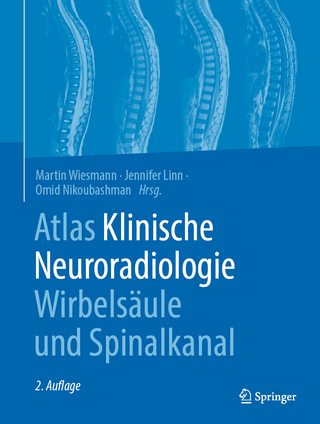
Spinal Cord Monitoring
Springer Wien (Verlag)
978-3-7091-7329-9 (ISBN)
Section I: Spinal cord blood flow, neurochemistry and sensory function.- 1.Spinal cord blood flow and metabolism in transient spinal ischemia.- 2.Calcium binding proteins in the spinal cord: physiological significance.- 3.Substance P Transmitter or regulator in spinal sensory mechanisms?.- 4.The role of glycine in pain and spasticity.- 5.Prostaglandin system in the pathophysiology of the spinal cord. A neuroanatomical study.- Section II: Spinal cord regeneration and repair.- 6.Neurotrophic factors and CNS regeneration.- 7.Regeneration in the axotomised cord: influence of cyclosporin A and neonatal immune desensitization in mammals.- 8.Neurotrophic factors attenuate neuronal nitric oxide synthase upregulation, microvascular permeability disturbances, edema formation and cell injury in the spinal cord following trauma.- Section III: Spinal cord electrophysiology: methods and various techniques.- 9.A Cerebellar evoked potential for spinal cord monitoring.- 10.Generation of magnetic evoked spinal cord potentials.- 11.Magnetic stimulation of spinal nerve roots and cortical somatosensory evoked potentials.- 12.A combination of microdialysis, electrophysiology and histology for exploring secondary damage upon spinal cord injury.- Section IV: Spinal cord evoked potentials: pathophysioiogy and pharmacological aspects.- 13.Spinal cord bioelectrical activity, edema and cell injury following a focal trauma to the rat spinal cord.- 14.Spinal cord blood flow and evoked potentials as outcome measures for experimental spinal cord injury.- Section V: Spinal cord monitoring in clinic: pathology and diseases processes.- 15.White matter changes in human spinal cord injury.- 16.Motor control in human spinal cord injury.- 17.Intraoperative neurophysiology of the corticospinal tract.- 18.Corticospinal volleys evoked by transcranial electrical and magnetic stimulation.- Section VI: Spinal cord monitoring in clinic: pharmacology, therapy and outcome measures.- 19.Novel approaches to the treatment of post compressive spinal cord injury.- 20.The multicentre outcome survey of spinal cord monitoring: monitoring reduces neurologic deficits.- 21.Effect of anaesthetics on somatosensory and motor evoked potentials in humans.- 22.Intraoperative spinal cord monitoring: clinical overview.- Author index.
"... Das Konzept des Buches, Grundlagenforschung und klinische Bedeutung zusammenzubringen, ist durchwegs geglückt ... bietet detaillierte umfassende Information ... ein wertvolles Werk für neurophysiologisch orientierte Neurologen, Rehabilitationsmediziner und Physiologen." Der Nervenarzt 10/2000
| Erscheint lt. Verlag | 5.12.2012 |
|---|---|
| Zusatzinfo | XV, 531 p. |
| Verlagsort | Vienna |
| Sprache | englisch |
| Maße | 155 x 235 mm |
| Gewicht | 836 g |
| Themenwelt | Medizinische Fachgebiete ► Chirurgie ► Neurochirurgie |
| Medizin / Pharmazie ► Medizinische Fachgebiete ► Neurologie | |
| Studium ► 1. Studienabschnitt (Vorklinik) ► Anatomie / Neuroanatomie | |
| Studium ► 1. Studienabschnitt (Vorklinik) ► Physiologie | |
| Studium ► 2. Studienabschnitt (Klinik) ► Pathologie | |
| Naturwissenschaften ► Biologie ► Zoologie | |
| Schlagworte | electrophysiology • evoked potentials • Neurology • Neuropathology • Neurophysiology • neurosurgery • pathophysiology • Physiology • sensory function • spinal cord injury • spinal cord regeneration • Surgery • Trauma |
| ISBN-10 | 3-7091-7329-9 / 3709173299 |
| ISBN-13 | 978-3-7091-7329-9 / 9783709173299 |
| Zustand | Neuware |
| Informationen gemäß Produktsicherheitsverordnung (GPSR) | |
| Haben Sie eine Frage zum Produkt? |
aus dem Bereich


